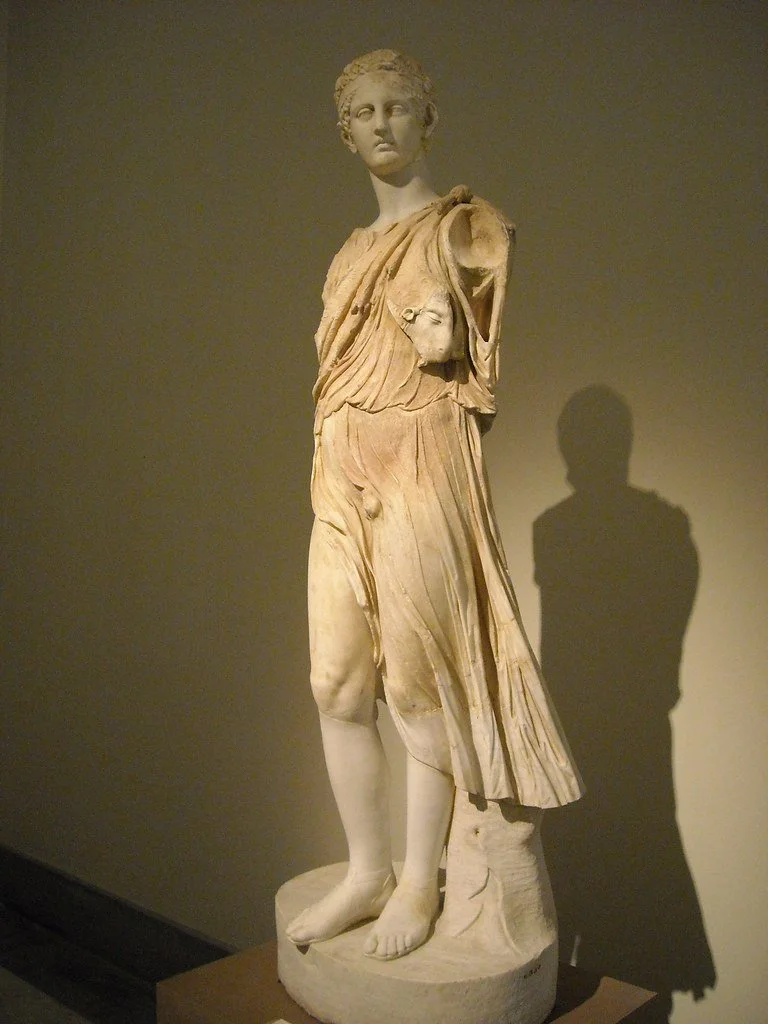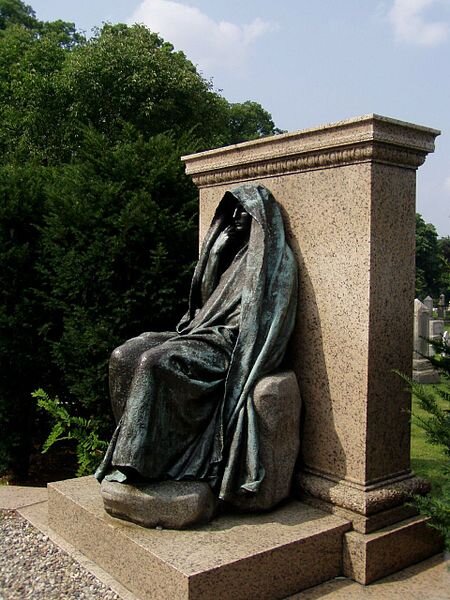
“To assume a form, any new form, it is necessary to consider beings’ understanding of themselves. And in assuming the human form, we saw that the first human was male and female—one—and later divided. That is your story, however disturbing it is to some.”
— The God Painter
Hellenistic Bronze Figure of Hermaphrodite circa 2nd or 1st Century BCE
Androgynous Eros chasing deer. 340-320 BCE. Metropolitan Museum of Art, New York. Eros, the god of love and sex born to Aphrodite and Aries, is often depicted with both male and female characteristics.
The so-called Bacchus-Hermaphrodite. Body: 2nd century CE; head: 2nd century CE. Copy of a Greek original of the 4th century BCE, attributed by Praxiteles. National Archaeological Museum, Naples. Italy. Alamy PPHX0E.
Dionysius, the Greek counterpart of Bacchus, has been consistently depicted as male. However, the androgynous presentations of both deities influenced the “sleeping Hermaphroditus” form, which appeared in the 1st century BCE.
The Sleeping Hermaphroditus. Original by Polycles the Elder, in bronze, circa 155 BCE. Shown here, a Roman copy in marble discovered in 1880, currently housed in the National Museum of Rome. The original is housed at the Louvre and is the only version to have its own mattress, commissioned in 1620.
The Ardhanarishvara, the two-sexed form of the Hindu deity Shiva and his wife Parvati. The earliest images are dated to the 1st century. This bronze (Cambodia) is estimated to be 7th to 8th century. Metropolitan Museum of Art, New York.
Ardhanarishvara, watercolour on paper dated to 1710-20. This image is unusual in that the dominant right side displays the feminine. Not all images of Ardhanarishvara depict the equality of masculine and feminine. When the deity has three arms, only one is Parvati’s, indicating her inferiority.
In the West African Dogon religion, one origin story says the Nummo were the divine twins with one soul. This was considered the ideal androgyny at the beginning of time. Then the jackal was born, a lone male with no soul. Subsequently, all humans had to become single-sexed.
Rebis, endpaper, first title page of Aurora Consurgens, manuscript dated to the late 14th or early 15th century consisting of commentary on writings of Muhammad ibn Umayl al-Tamimi and illustrations of alchemical symbols.
The Rebis is the alchemical end product of the union of opposites after all the associated qualities have been purified and united into something stronger. In this illustration, the giant blue bird raising up the androgyne represents sublimatio, or the drawing of the spiritual from the corporeal.
Adam the Androgyne. From Pierre Boaistuau’s Histoires Prodigieuses, 1560.
Rebis, frontispiece to Aphorismi Urbigerani, a handbook of alchemical secrets by Baro Urbigerus, published in English in 1690. Virtus unita Fortior. Strength united is stronger. Per Nos omnia. Through us, everything.
To the left of the tree, Apollo and Diana stand side-by-side; to the right, they emerge as one person (the rebis, or alchemical hermaphrodite). According to the book’s commentary, the liquid shown around the tree is the medium that dissolves and the two beings into one.
Damaged sculpture of the dual-sexed god Hermaphroditus. From a contemporary collection by artist Damien Hirst consisting of 2000-year-old artifacts recovered from the Indian Ocean in 2008. Some sculptures, such as the one shown here, were displayed without restoration.
Notes for the exhibit draw the viewer’s attention to the “sense of maintaining a balance of opposing, yet complementary, forces reflect[ing] the purity that some ancient thinkers ascribed to androgyny.”
Adams Memorial at Saint-Gaudens National Historical Park. From the park’s website:
Henry Brooks Adams (great grandson of John Adams and grandson of John Quincy Adams) in 1886 to create a memorial for his wife’s grave in Washington, D. C.’s Rock Creek Cemetery. Marion, a D. C. socialite and accomplished photographer, had committed suicide a year earlier. Adams did not want a likeness of his wife, but instead asked Saint-Gaudens to create a spiritual figure that encompassed Buddhist philosophy and was similar to characters from Michelangelo’s Sistine Chapel. Both male and female models were used to create the androgynous figure.
Androgynous Christ, painting located in The Hôpital Notre-Dame à la Rose in Lessines, Belgium. According to one medical news source, two other copies exist in northern France.
In “The Androgyny of Christ,” published in the Journal of Endocrinological Investigation, Valdes-Socin and Vuidar comment:
The work, probably commissioned by Augustinians nuns, was restored during the twenty-first century. Unexpectedly, restoration discovered an androgynous Christ, occulted under a layer of paint on the upper torso. Indeed, we observe some additional female characteristics of Christ, such as breasts, and feminine curves. Jesus finger, delicately placed on his nipple, further reinforces the symbolism of divine spiritual breastfeeding. … By giving Christ both male and female characteristics, the artist shifts the traditional image of the crucified Saviour into a universal symbol of all suffering humanity.
The traditional icon of Holy Wisdom—Sophia—depicts Christ as feminine. In other variations, Jesus Christ the male is included above the Christ/Sophia. The monogram on the top of this icon, IC XC, explicitly indicates that this is an icon of Christ, whether or not the form is feminine.













